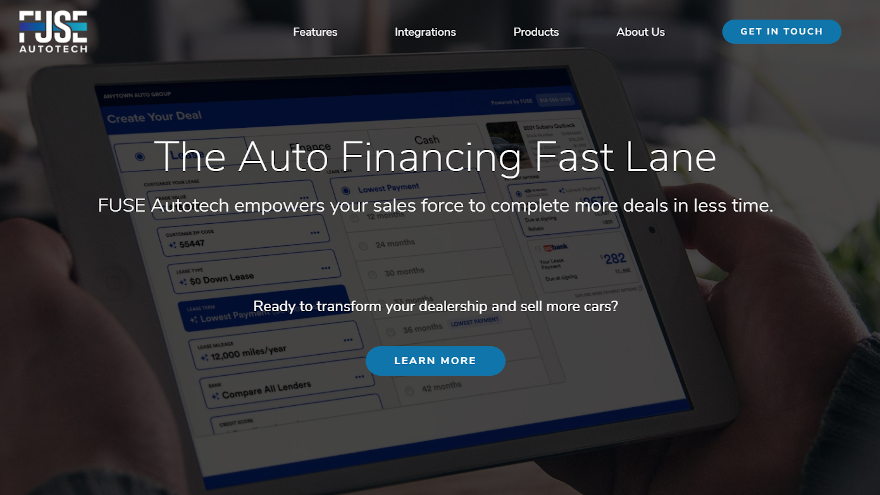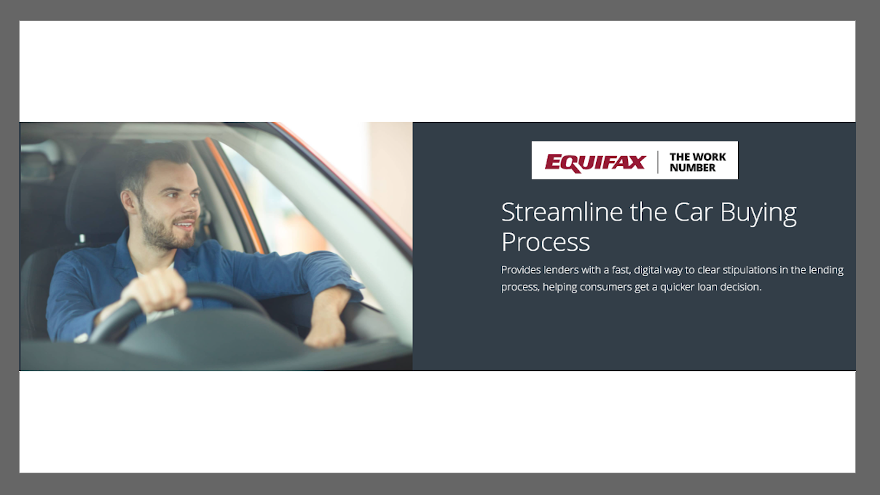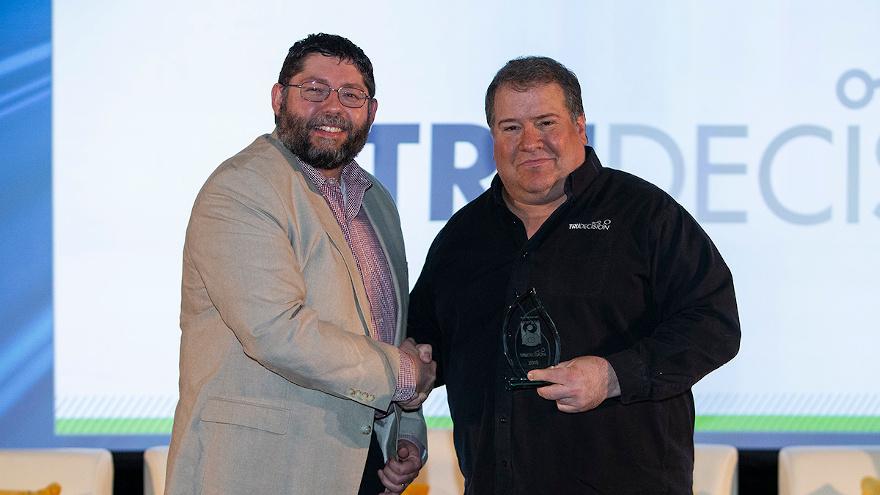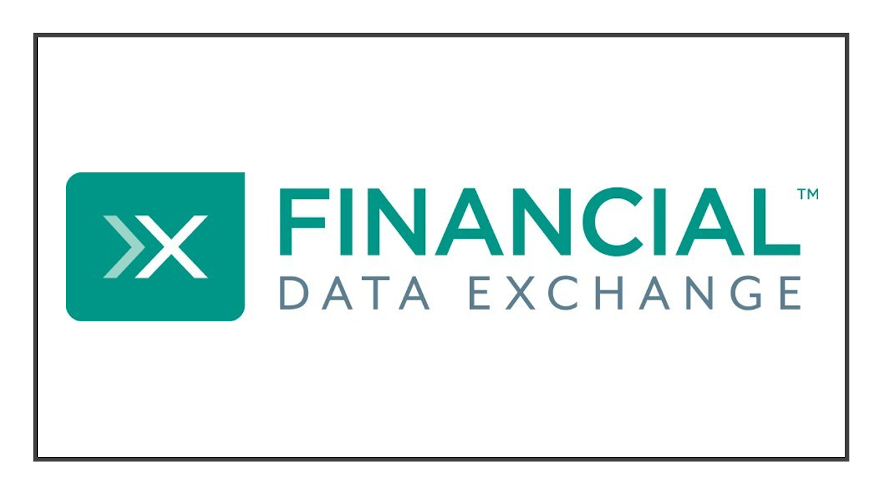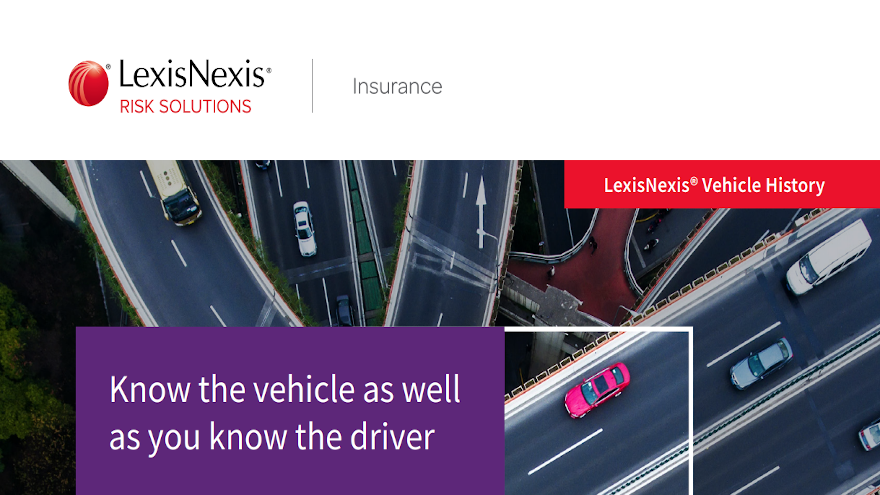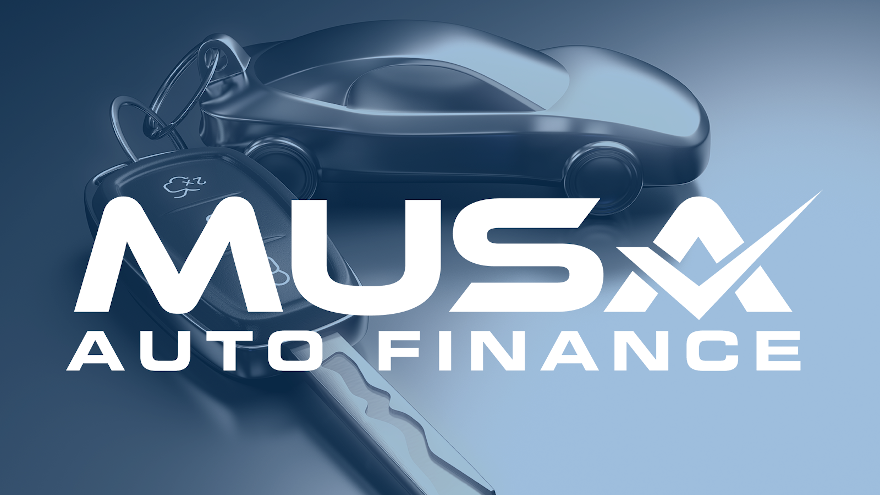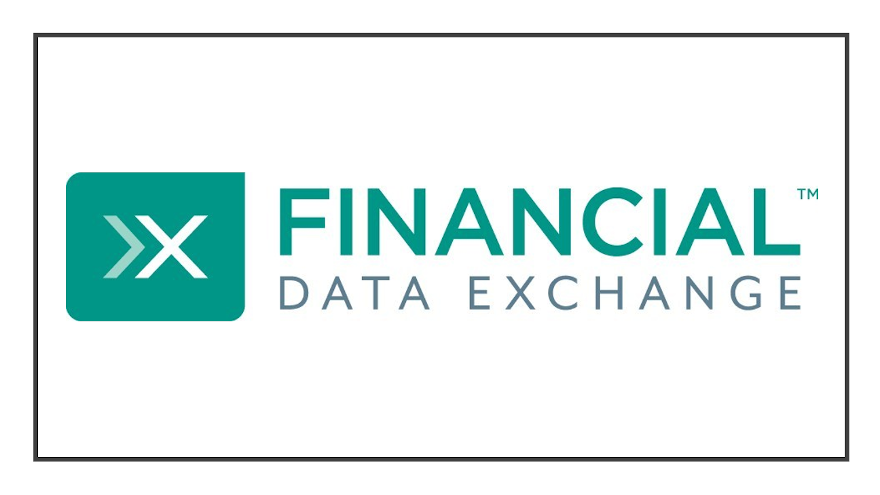On Tuesday, Walser Automotive Group, in partnership with PICO Venture Partners, announced the launch of a cloud-based predictive finance management system fueled by artificial intelligence that’s designed to cut the delivery process down from an average of three hours to 30 minutes.
Along with that time savings, company leaders said the FUSE Autotech fintech software platform can enable other dealerships to convert more deals with higher margins while simultaneously improving the customer experience.
According to a news release, Walser partnered with PICO Venture Partners to develop a SaaS business platform that combines Walser’s in-depth operational and market knowledge of the automotive industry with PICO’s expertise in building and scaling automotive retail software companies.
FUSE Autotech can enable dealers to provide consumers with a fully automated online and in-store retail experience.
PICO Venture Partners led the Series A investment in FUSE Autotech. PICO Venture Partners managing partner Elie Wurtman joined the company as executive chairman alongside Andrew Walser, chief executive officer of Walser Automotive Group.
Wurtman has more than 27 years of experience as an entrepreneur, executive and investor and is one of the co-founders of online used-vehicle retailer Vroom.
Colton Ray will serve as CEO of FUSE Autotech, according to the news release.
Another member of the Walser Automotive Group — partner Paul Walser — is set to become the 2021 chairman of the National Automobile Dealers Association. Walser discussed digital retailing and other topics in a special Q&A that’s set to be included in the February edition of Auto Remarketing that delves into how dealer groups of all sizes are trying to leverage online and in-store opportunities to keep vehicles turning.
Meanwhile, you can find the January edition in digital form by going to this website. Or to subscribe to the print version, go to www.autoremarketing.com/subscribe.
While other segments of the economy are struggling, Equifax highlighted that vehicle sales showed strength at the end of 2020 in spite of the economic impacts of the COVID-19 pandemic.
And Equifax is trying to help make sure the industry stays in that position through its latest solutions.
To assist dealers and finance companies more effectively manage the increased volume of applications, Equifax rolled out StipClear Employment and StipClear Income this week.
Tailored to meet the verification needs of the auto industry, Equifax highlighted both products include The Work Number database information, which can help to automate the origination process and verify information provided on applications.
According to a September McKinsey study, Equifax noted that digital processes are becoming more important along the entire vehicle-purchase funnel. The study concluded that two-thirds of younger consumers prefer a digital format for conducting car purchases.
This trend, combined with a recently reported rise in fake pay stubs submitted with auto-finance applications along with current social distancing sensitivities, has led many dealers and finance companies to begin making more committed moves toward digital processes, according to Equifax.
“It’s clear that the automotive industry is moving very quickly towards more simple, streamlined and online auto financing environments,” said Lena Bourgeois, senior vice president of automotive services at Equifax.
“Dealers and lenders alike want and need to incorporate digital solutions into their process,” Bourgeois continued in a news release. “Digitizing the verifications process with The Work Number helps them to structure new and used auto loans more efficiently and offer their customers quick decisions.”
Equifax said automated employment and income verifications through The Work Number database can benefit dealers, finance companies and consumers.
Digital verifications tap into more than 111 million active employment records in The Work Number database, including many small- to medium-sized businesses as well as hundreds of thousands of 1099 records that can help to accelerate funding decisions and help to eliminate the need for phone calls and pay stubs.
Data analysis from Equifax also showed that when applicants’ income and employment are verified by The Work Number, those auto applicants are 40% more likely to be funded.
“With automated verifications of income and employment, paper pay stubs may be taken out of the equation,” said Joel Rickman, senior vice president of verification services for Equifax.
“When information is provided by The Work Number, consumers don’t have to collect pay stubs and lenders don’t need to spend extra time validating them,” Rickman continued. “Digital delivery of employment and income verifications helps reduce uncertainty, clear stips and allows the buyer to close the transaction and drive off in their new car.”
Equifax went on to mention the finance company may place a stipulation on the contract approval, indicating that the applicant is approved, and the deal will be funded.
Equifax added credentialed finance companies also can clear the stipulation quickly and seamlessly using one of its auto products to verify income or employment information through The Work Number database.
For more information on automotive verification solutions from Equifax, go to this website.
Consumers who want an electric vehicle from Rivian will have a digital path to finance it.
This week, Rivian announced that it selected Chase as its private-label partner to provide customers with what the manufacturer is calling a “truly digital-first vehicle financing journey.”
The private label Rivian Financial Services is set to launch early this year — ahead of June deliveries of Rivian’s R1T pickup — through what the company said will be “a highly transparent, interactive and simple purchase process.”
Beginning with the credit application on rivian.com, customers can self-select a retail financing structure that best fits their needs. Rivian indicated they will be offered a competitive, personalized decision within minutes that includes the ability to finance a variety of accessories to complement their electric adventure vehicle.
Then customers will have the opportunity to review the financing details and electronically sign required documents.
After vehicle delivery, customers can take advantage of digital servicing to view their account, make payments and obtain personalized customer support.
“At Rivian, we’re focused on delivering truly exceptional customer experiences with every interaction,” Rivian chief growth officer Jiten Behl said in a news release. “Chase is aligned with our goal of fully reimagining the vehicle purchasing process for the digital era and making the investments to deliver a best-in-class financing solution for Rivian customers.”
Jagdeep Dayal, head of partnerships for Chase Auto, added: “As customers increasingly look to do more online, we’ve activated our deep digital expertise across Chase to enhance the car buying experience. The ability to seamlessly integrate financing into the purchase process helps our customers more simply secure a vehicle they will enjoy and can afford.”
Last year included several milestones for Emerging 8 honoree Lightico, including client growth, new executives joining the team as well as another $13 million in investment funding to help the digital customer interaction platform.
Lightico co-founder and chief executive officer Zviki Ben Ishay joined the Auto Remarketing Podcast not only to discuss the company’s prospects but how the entire auto-finance industry has accelerated its digital usage.
To listen to the entire conversation, click on the link available below, or visit the Auto Remarketing Podcast page.
Download and subscribe to the Auto Remarketing Podcast on iTunes or on Google Play.
One of the first Emerging 8 honorees continues to be on an upward trajectory more than a year after receiving the accolade during the Automotive Intelligence Summit.
On Monday, TruDecision announced that its advanced analytic platform will be deployed by CIG Financial (CIG) to pursue improved performance and an enhanced dealer experience.
Executives explained CIG will leverage TruDecision's Expert Auto Score in order to offer an increased number of competitively priced approvals.
TruDecision offers what the company dubs as an analytic platform as a service, where sophisticated quantitative solutions are developed and rapidly deployed for clients on a pay-per-use basis.
“Every modeling form has strengths and weaknesses associated with it, including AI and machine learning. We refer to our service as an analytic platform because we start with the client’s business need and then select the method that most effectively addresses it,” TruDecision chief executive officer Daniel Parry said in a news release.
“We are very pleased to partner with CIG Financial, a leader in the auto finance industry that already has a strong foundation in disciplined lending,” Parry continued.
“Origination models are typically built off of a lender’s own performance, which only represents a fraction of what they see; however, their models must be accurate on all applications,” he went on to say.
“For this reason, we created the Expert Auto Score, which was developed off of millions of consumer records,” Perry added about the score that is comprised of numerous models that are tailored to be accurate across the credit spectrum, from near-prime to deep subprime.
CIG Financial president Jeff Butler explained why his firm tapped TruDecision’s technology.
“We are committed to bringing additional value to our dealer partners in order to help them achieve greater sales,” Butler said. “The ability to offer highly competitive terms on more approvals is a critical part of delivering on that commitment.
“The team at TruDecision not only offers best-in-class solutions to help us achieve this, but their substantial experience as auto lenders enables us to seamlessly integrate their models into our existing operations,” Butler added.
For more information, reach out to solutions@trudecision.com or visit www.trudecision.com.
The Financial Data Exchange (FDX) is closing the year with its latest release that includes a myriad of technical standards and updates to the existing specification that have now been launched into the financial services marketplace.
“FDX’s fall release is another milestone and proof point of how FDX continues to deliver on its promise to unify the financial industry around secure, common, interoperable and royalty-free standards for user-permissioned data sharing and open finance,” FDX managing director Don Cardinal said in a news release.
“While this release represents many technical components of consumer data sharing and open finance, the end result is a more robust, secure and transparent way forward for consumers to understand, leverage and benefit from their own financial data and improve their financial lives,” Cardinal added.
The components of the latest FDX release include:
— FDX API version 4.5: This latest version of FDX API includes new features that improve account number security via an optional use of tokenized data for payments and improves the data quality for use cases such as lending via expanded account holder information fields.
— User Experience (UX) Guidelines version 1.0: This first iteration of the FDX UX Guidelines provide implementers of the FDX API with clear direction for designing permissioning processes for end-users to grant consent to access their financial data. Based in extensive user research and drawing on the collective expertise of our members, the documentation describes the concepts of financial data sharing, data flow and data clusters, followed by specific guidelines to ensure that the data sharing user experience will increasingly be a consistent, familiar, and friction-free process.
— Personal Financial Management (PFM) Use Case: Developed after months of consultation among FDX members, this first FDX defined use case provides end-users with access to data they need to manage their personal finances while ensuring data minimization so that only necessary data is shared. Specifically, the PFM Use Case defines the minimum required data elements consumers must share to power personal financial management apps and services without sharing additional unneeded financial data.
FDX plans to approve and certify additional use cases in the future such as credit management and servicing, account verification and tax preparation.
— Taxonomy of Permissioned Data Sharing: FDX is providing this set of common data sharing terminology to align industry stakeholders and help regulators and policymakers better understand and define the various roles and perspectives within the user-permissioned financial data ecosystem.
The taxonomy also includes comparison of similar terminology defined by regulators, policymakers, and other financial services industry bodies.
— FDX Financial-Grade API Security Specification version 3.2: Adopted from globally recognized FAPI v1 standard from OpenID Foundation, this Security Specification aims to provide specific implementation guidelines for online financial services to adopt by developing a REST/JSON data model protected by a highly secured OAuth profile.
— Control Considerations version 3.2: This documentation represents a reference architecture addressing security, and fraud concerns in user-permissioned financial data exchange between financial institutions (data providers), data aggregators (data access platforms) and fintech applications and services (data recipients).
FDX explained this reference architecture will better align security, risk, cost, fraud and user-experience with consumer expectations to be able to view and manage all their financial relationships in one convenient location. Specifically, version 3.2 includes guidelines for application-level encryption in data transmission and updated references to FIDO 2.0 — a design pattern for direct authentication of end-user via mechanisms such as biometrics.
— Foundational Requirements version 1.0: The document covers operational quality requirements that data providers must meet to apply for a FDX use case certification. The document covers availability, performance, and security requirements, and is part of a series of certification documents that will outline the FDX certification requirements.
All FDX releases originate with work by FDX’s global array of members from across the financial industry spectrum in FDX’s committees, working groups and task forces to arrive at technical standards for the entire financial services industry.
This week’s release was approved by the FDX board of directors in September and completed satisfaction of a 60-day objection period.
“The standards, products and updates contained in today’s release represent the best of financial industry collaboration and offer critical guidance and industry-led standardization that will deliver a more consumer-centric, secure and transparent open finance data sharing experience for consumers,” FDX’s director of product Dinesh Katyal said.
When it comes to digital financing through dealerships and finance companies, the genie is out of the bottle. The toothpaste is out of the tube. Pick whatever analogy you want to use, as J.D. Power put it: customers “won’t go back to the old way of doing things.”
According to the J.D. Power 2020 U.S. Consumer Financing Satisfaction Study, more vehicle buyers than ever have turned to digital channels when it comes to pre-transaction research and lining up financing options for a vehicle.
Study orchestrators explained that meeting with the dealership’s finance department — the one in which vehicle buyers are presented with the dealer’s recommended financing options and offered add-ons — is evolving to more of a digital experience and is being dictated by consumer demand.
J.D. Power also discovered a growing percentage are securing direct financing prior to their purchase. While some of this behavior has been driven by the COVID-19 pandemic, an increasing number of buyers say they prefer a digital origination process for their next vehicle purchase.
“The pandemic accelerated a trend toward digital auto loan origination that has been developing for some time,” said Patrick Roosenberg, director of automotive finance intelligence at J.D. Power.
“Many buyers who have secured financing digitally had a great experience and won’t go back to the old way of doing things — even when COVID-19 is no longer a factor,” Roosenberg continued in a news release.
“To improve satisfaction and lower the cost to serve during these changing times and beyond, providers need to build a robust digital platform that addresses borrower needs, from research and origination through account management and billing.”
Four other key findings from the 2020 study include:
• More consumers complete digital credit applications, and like it: Nearly one-third (32%) of auto loan borrowers completed a digital credit application, with 22% using the finance company’s website and 10% using a mobile app.
J.D. Power indicated the frequency of digital applications has increased 8 percentage points from last year. The average customer satisfaction score for those applying for an auto loan digitally is 887 (on a 1,000-point scale), while the average customer satisfaction score for those applying at a dealership is 842.
• A trend that signals staying power beyond the pandemic: A total of 40% of borrowers say they prefer at least part of the financing origination process to be digital when they purchase their next vehicle.
The number of borrowers who say they will apply for financing digitally (via website or mobile app) in the future is up 3 percentage points from 2019, while the number of consumers who say they will secure financing through the dealership is down 4 percentage points year-over-year.
• Direct financing gains traction, led by luxury segment: While 85% of auto-finance customers still secure their financing through the dealership, more borrowers than ever are pursuing direct financing.
J.D. Power indicated a total of 15% of participants in this year’s study secured direct financing, up 3 percentage points from a year ago. In the luxury segment, that number is up 3 percentage points to 26% of all eventual contract holders.
• Digital account management and bill pay improves customer satisfaction: A growing number of borrowers also are turning to digital channels for loan account management and bill pay.
During the past two years, J.D. Power use of finance company mobile apps for account management has increased 8 percentage points and use of the website has increased 2 percentage points, while offline account management has declined three percentage points.
The study also showed customers have the highest levels of overall satisfaction (884) when using finance company’s mobile app.
Finance company rankings
Lincoln Automotive Financial Services ranked highest in customer satisfaction among luxury brands with a score of 899.
Capital One Auto Finance (885) came in second and BMW Financial Services (881) finished third.
BB&T now Truist ranked highest among mass market brands with a score of 879. Capital One Auto Finance (870) and Ford Credit (870) finished in a tie for second place.
The J.D. Power U.S. Consumer Financing Satisfaction Study measures overall customer satisfaction in five factors, including:
— Billing and payment process
— Mobile app experience
— Onboarding process
— Origination process
— Website experience
The study was fielded in July and August and is based on responses from 10,103 customers who financed a new or used vehicle through an installment contract or lease within the past three years.
Luxury Rankings
Lincoln Automotive Financial Services: 899
Capital One Auto Finance: 885
BMW Financial Services: 881
Infiniti Financial Services: 876
Lexus Financial Services: 876
Audi Financial Services: 875
Bank of America: 866
Wells Fargo Auto: 866
Segment Average: 886
Mercedes-Benz Financial Services: 862
Chase Automotive Finance: 850
Acura Financial Services: 849
General Motors Financial: 849
Mass Market Rankings
BB&T now Truist: 879
Capital One Auto Finance: 870
Ford Credit: 870
Honda Financial Services: 866
Bank of America: 860
General Motors Financial: 859
Chase Automotive Finance: 857
Southeast Toyota Finance: 855
Ally Financial: 853
Segment Average: 850
NMAC: 847
Toyota Financial Services: 845
Hyundai Motor Finance: 842
Wells Fargo Auto: 839
TD Auto Finance: 836
Chrysler Capital: 834
Kia Motor Finance: 833
U.S. Bank: 832
Volkswagen Credit: 831
PNC Bank: 823
Huntington National Bank: 822
Fifth Third Bank: 811
Citizens One Auto Finance: 805
Santander Auto Finance: 801
Connected vehicles are giving LexisNexis Risk Solutions the path to provide more information to its clients, which can be crucial when a total-loss claim is in motion.
The provider of data, analytics and technology for insurance recently announced the inclusion of mileage information from connected vehicles in its LexisNexis Vehicle History solution.
The company explained the enhancement can enable U.S. auto insurers to use connected mileage data for insurance quotes, at policy renewal to confirm miles driven, and on an ongoing basis to support mileage monitoring programs.
Where traditional mileage information has been infrequently available based on varying collection methods, LexisNexis Risk Solutions said it now receives odometer data directly from connected vehicles and delivers it seamlessly into an insurer’s workflow.
LexisNexis Risk Solutions noted the addition supplements accident information, branded title designations and other historical vehicle usage data currently delivered through the Vehicle History solution to provide an expanded set of vehicle-related attributes for insurers to consider as they strive to increase rating accuracy.
In the future, this data can benefit claims adjusters seeking up-to-date odometer readings for purposes of estimating total loss payments, according to LexisNexis Risk Solutions.
“Annual mileage has long been a sought-after data point, but now these insights have even more relevance as driving patterns have changed due to the COVID-19 pandemic and drivers have adapted to working from home,” said Liz Rozier, director of auto insurance for LexisNexis Risk Solutions.
“As pay-per-mile policies increase in popularity, it is important that insurers meet the needs of their customers with regular and more accurate odometer readings to track miles driven on an ongoing basis,” Rozier continued in a news release.
According to the LexisNexis Risk Solutions Auto Trends Report, the number of connected vehicles on the road is rising rapidly and is expected to triple by 2023.
As more connected vehicle information and mileage readings become available, LexisNexis Risk Solutions said that it will remain a centralized, single point for insurers to gain access to data from various automakers.
The new mileage data from LexisNexis Vehicle History can be delivered via LexisNexis Auto Data Prefill, which can provide up-to-date driver, vehicle and policy information for 89% of the insurance auto market.
LexisNexis Risk Solutions also works with insurers on their usage-based insurance (UBI) programs leveraging the LexisNexis Telematics App, which can collect driving behavior data including mileage information. These programs can allow insurers to connect with policyholders about potential discounts and other benefits linked to driving behavior.
“It’s important to us that our solutions work effectively with and evolve with the needs of carriers,” Rozier said. “As connected vehicles change the game, we are finding new ways to leverage and share the data collected.”
MUSA Auto Finance is looking to capitalize on the leasing market, especially with more happening digitally nowadays.
This week, MUSA Auto Finance announced plans to expand both its new- and used-vehicle leasing platform nationwide through a partnership with two large U.S. financial institutions working together toward securitization.
Auto Fin Journal asked MUSA Auto Finance representatives for specifics about these financial institutions, but the company said it was not permitted to share those details publicly.
In a news release, MUSA Auto Finance chief executive officer Jeff Morgan shared what details about this development that could be revealed.
“We are excited to continue MUSA’s growth through this exclusive, and we believe, first-of-its-kind funding arrangement,” Morgan said. “We remain committed to increasing the use of what we call intelligent automation here at MUSA.
“In fact, our proprietary leasing and lending platform is very popular with our dealer partners nationwide,” he continued.
Since its inception, MUSA Auto Finance has tried to automate what can be a time-consuming, manual process traditionally associated with leasing and buying a vehicle.
One of MUSA’s technology platforms can process the application, calculate the lease, automatically decision the application provide an approval back to the dealer partner and accurately pre-fills the lease contract in seconds.
The company added that automated approvals normally occur in just a few seconds, and consumers can upload supporting documents via their mobile device.
“My team and I specialize in new and used auto leasing, which has consistently been the biggest growth sector of auto finance for the past several decades. Leasing performs remarkably well in any type of economy when structured properly,” Morgan said.
“In addition, MUSA’s technology and platform have been enhanced to serve higher demand and market expansion, such as retail auto loans, direct-to-consumer for our lease returns and a fully remote leasing and loan experience that can be executed beginning to end, from anywhere,” he continued.
“Our team includes some of the best the industry has to offer, and I intend to make more exciting announcements in the weeks and months to come,” Morgan went on to say.
The Financial Data Exchange celebrated the significant growth and accomplishments the organization has generated in just two years.
FDX marked its second anniversary by reiterating its goal of unifying the entire financial industry around a secure, common, interoperable and royalty-free standard for user-permissioned data sharing.
“Our work has really just begun, but never in my wildest dreams did I think that FDX would grow this fast and accomplish this much in just two years,” FDX managing director Don Cardinal said in a news release.
FDX began in the fall of 2018 with just 21 founding member companies that included fintechs, financial institutions, financial data aggregators and a few financial industry groups. Since that time, FDX has grown to 153 member organizations and is active in the U.S. and Canadian markets along with members around the world.
FDX members also now include several consumer advocacy organizations, a wide range of fintechs, financial institutions of all sizes, payment networks, ecosystem utilities, financial industry stakeholders and a growing number of academics, researchers and financial data ecosystem luminaries.
“The success and growth of FDX shows that even in an industry with fierce competition, market participants can come together to work on technical standards that empower consumers and achieve efficiencies in the market. If the last two years is any indication, FDX has a bright future ahead of it,” said Steve Smith, chief executive officer and co-founder of Finicity and co-chair of the FDX board.
The organization emphasized that FDX’s goal of defining technical standards that will enable financial data sharing to be more consumer controlled, accessible, transparent, traceable and secure has never been in question, but accomplishing this work has involved thousands of hours of work across the financial industry through FDX’s many committees, working groups and taskforces.
Specifically, FDX is on Version 4.2 of the FDX API, which now includes a comprehensive API representation of U.S. tax forms. FDX will also soon be releasing User Experience Guidelines 1.0 for implementers of the FDX API that describe the permissioning process for end-user to grant consent to access their data, and will also release an industry taxonomy to better define ecosystem roles and concepts.
Finally, and what the organization is calling an industry first, FDX’s user-permissioned data sharing Use Case for Personal Financial Management (PFM) will soon provide end-users with access to data they need to manage their personal finances while ensuring data minimization so that only necessary data is shared.
“It’s exciting and rewarding to see the financial ecosystem rally around the mission of FDX. We all want our customers to have control and flexibility over their finances and their financial data and the member organizations of FDX continue to enable this via the FDX API. This will only serve to promote even further innovation to help our customers,” said Ben Soccorsy, senior vice president in the strategy, digital and innovation group at Wells Fargo and co-chair of the FDX Board.
The organization explained that all financial data accessed through the FDX API standard is user permissioned and no financial records are accessed with the FDX API without a consumer’s full permission and control.
Further, FDX noted that it seeks to provide benefit and market efficiencies to financial services entities of all sizes. The FDX specification is free to download and use, and the common and interoperable nature of the FDX API creates economies of scale for API-based solutions to be developed.
“This will allow even the smallest financial institutions and fintechs to compete on a level playing field in user-permissioned data sharing,” FDX said.
For more details about the organization and a list of current members, go to financialdataexchange.org.

